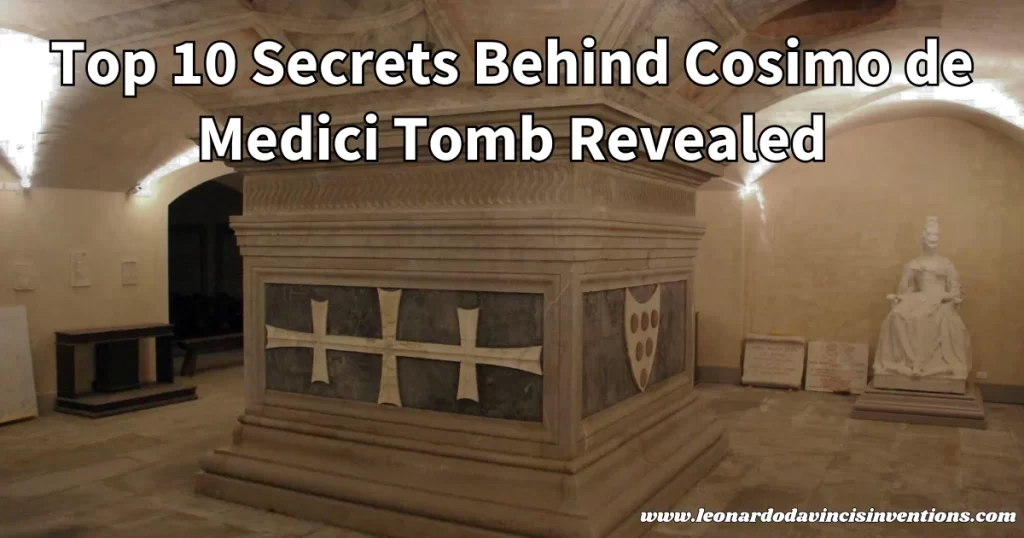
The Cosimo de’ Medici Tomb has fascinated historians, travelers, and art lovers for centuries. Many questions and mysteries remain about what lies within.
This article reveals the top 10 secrets behind the Cosimo de’ Medici Tomb, providing a clear look at its hidden history and facts.
You will discover what makes this tomb unique. Experts continue to study it, and new evidence is helping researchers solve old mysteries.
Get ready to explore surprising details hidden for hundreds of years.
1. Location of Cosimo de’ Medici’s Tomb in the Medici Chapels, Florence
Cosimo de’ Medici’s tomb lies inside the New Sacristy of the Medici Chapels. This area connects directly to the famous Church of San Lorenzo in Florence.
The Medici family chose this location because San Lorenzo served as their parish. The church played a central role in Florence during the Renaissance.
Visitors will not find Cosimo de’ Medici’s tomb among the grand marble monuments above ground. His final resting place is in the crypt below the main altar.
The family honored his great status and kept him close to the church relics, reflecting his importance as a leader and patron of the arts in Renaissance Florence.
The Medici Chapels are part of a larger complex, designed over centuries alongside San Lorenzo. These chapels also house the tombs of other prominent members of the Medici family.
This shows the wealth and power of the Medici family throughout Florentine history. The Medici mausoleum is known for its massive dome and rich materials.
It symbolizes the family’s influence and commitment to art and architecture. Cosimo de’ Medici’s modest granite tomb slab, hidden beneath the altar, contrasts with the more elaborate tombs of the Medici family in the chapel.
This simple design choice reflects humility. It also underscores his profound legacy in Florence.
The burial site continues to draw people interested in the traditions of the Medici dynasty. Many also come to see the art and architecture that define Renaissance Florence.
2. Brass Plaques Marking Burial Sites but Lack of Precise Burial Records
Cosimo de’ Medici’s tomb in the Church of San Lorenzo reflects the Medici family‘s wealth and status in Renaissance Florence. Brass plaques set into the floor mark where members of this powerful dynasty were buried.
These markers help identify the locations where figures like Cosimo and other Medici relatives are buried. However, there are no precise records about the burials beneath these plaques.
Historians and archaeologists found that church documents and burial registers offered little detail about how the Medici tombs were used over time. This lack of specific information makes it hard to confirm who lies beneath each marker.
In 1947, researchers began studying the Medici family’s burial sites more closely. They discovered that while brass plaques indicate burial locations, the records do not always match the physical burials underneath.
This challenge has led to debates among experts studying the secrets of the Medici and their legacy in Florence. The use of metal plaques represents a blend of art and architecture typical of funerary art from the Italian Renaissance.
Medici patronage of architecture and artistic commissions brought some of the best sculptors and designers to San Lorenzo. Yet, despite these contributions, the tomb design and burial records remain partly mysterious.
3. Relocation of Remains Below Chapel Floor for Protection
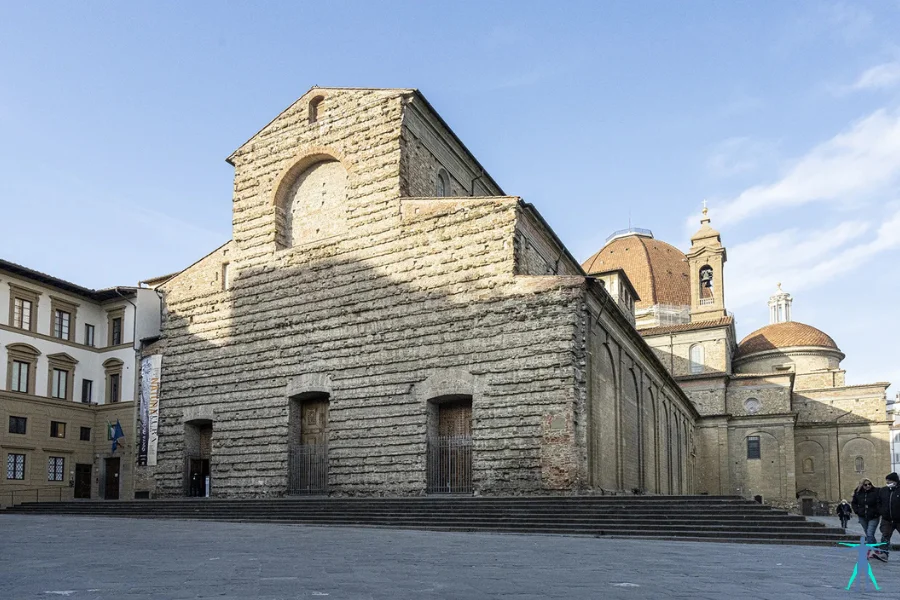
Cosimo de’ Medici’s tomb tells a story of protection and care. During unsettled times, people worried about the safety of the Medici family’s burial site inside the Church of San Lorenzo.
Those in charge moved them below the chapel floor to protect the remains from theft and desecration. This measure kept them safe when the Medici tombs above ground were at risk from thieves or political upheaval.
Today, brass plaques in the floor indicate the hidden locations where these remains are stored. The decision to bury Cosimo beneath the chapel floor reflects the Medici dynasty’s wish for privacy and protection.
It also highlights the importance of commemoration and honor in Renaissance Florence. This act guarded the physical remains and preserved the memory of a wealthy family who shaped Florentine history.
The Medici patronage of architecture and funerary art is visible even in these hidden spots. The secret burial places connect to the traditions of the Medici mausoleum, blending safety and respect for their ancestors.
Visitors may not see the tombs immediately, but these stories contribute to the artistic heritage of the Medici in Florence. Small details, such as the plaques and the careful placement of the tombs below ground, reflect the Medici’s attention to design and their reputation as patrons of the arts.
Each choice made for the burial site tells us more about their power and influence during the Italian Renaissance.
4. Evidence of Tomb Plundering Throughout History
Evidence of tomb plundering surrounds the Medici family burial site in the Church of San Lorenzo. Historical records indicate that the Medici tombs were not always left undisturbed.
Over the centuries, the growing reputation and wealth of the Medici family made their final resting places targets for thieves. In 1857, people discovered that the Medici tombs, then located above ground, had been plundered by grave robbers.
Stolen items and scattered remains told a story of disrespect for these prominent figures. As a result, authorities reburied the remains beneath the chapel floor for added security.
Florentine history shows that the Medici’s lavish tomb decorations, often crafted by famous sculptors, made the Medici mausoleum both an artistic marvel and a tempting target. Items made of bronze and marble, as well as precious funerary art, frequently led to repeated theft attempts.
The grandeur of the Medici patronage of architecture provided rare valuables that attracted looters. These acts of plundering harmed both the artistic heritage and the memorial purpose of the Medici tombs.
Many original elements vanished over time, including decorative sculptures and personal artifacts. Today, experts can only speculate about what was lost to these thefts.
Continuing research helps historians understand how the Medici dynasty’s burial traditions faced threats from human greed and changing times. Archaeological analysis continues to uncover new details about what survived centuries of interference.
5. Radiological Exams Revealing Inaccuracies in Medici Burial Myths
Radiological exams helped experts examine the burial site of Cosimo de’ Medici in the Church of San Lorenzo more closely. Using modern medical imaging, researchers were able to see inside the tomb slab without disturbing the remains.
This allowed for more accurate information about the Medici family’s burial traditions. Many believed myths about how the Medici dynasty arranged their graves for years.
Some stories said that Cosimo de’ Medici’s tomb contained a large marble crypt filled with treasures and intricate decorations. Radiological results showed these tales were not wholly accurate.
The scans revealed a simpler tomb design, focused on respect and commemoration rather than wealth and power. Researchers found that the burial’s layout matched Florence’s early Renaissance style.
This finding helps historians better understand the true artistic symbolism used in Medici mausoleums. Radiological technology made it easier to compare Cosimo de’ Medici’s tomb with others in the Medici Chapel.
By studying the fundamental structure beneath the bronze and marble materials, experts gained a deeper understanding of the Medici family’s lasting influence on Renaissance art and architecture. Their findings gave new insight into the Medici patronage of architecture in Renaissance Florence.
6. Malaria as a Contributing Factor to the Medici Family Deaths
Malaria affected the health of the Medici family during their period of wealth and power. Scientific studies found the deadly strain of this disease in the tissues of several members of the Medici dynasty.
Researchers detected malaria pathogens while examining mummified organs from the family tombs in Florence. Members of the Medici family, including those linked to Cosimo de’ Medici’s legacy, spent time hunting and managing lands around Tuscany.
Many of these areas were marshy, spreading malaria. These habits and land management patterns put the Medici at additional risk.
Experts used modern medical techniques to find evidence of malaria within remains found in the Church of San Lorenzo, the site of many Medici tombs. These findings reveal the medical challenges even a wealthy family faced during Renaissance Florence.
One high-profile example involves Francesco I de’ Medici, who died along with his wife Bianca Cappello. Researchers now believe malaria, not poisoning, as once rumored, caused their deaths.
The presence of malaria shapes how historians understand the Medici family’s burial traditions and tomb design. It adds complexity to the stories of art, patronage, and commemoration within the Medici chapel and Florentine history.
The Medici mausoleum stands as a testament to the power of politics and the legacy of artistic heritage. It also reminds us of the medical risks faced during the Italian Renaissance.
7. DNA Analysis Linking Organ Remains to Cosimo de’ Medici
DNA analysis has provided experts with new tools to investigate the Medici tombs. This technology helps clarify if the remains found truly belong to Cosimo de’ Medici.
Scientists have matched genetic material to the Medici family line by studying preserved organ tissue from the burial site. Researchers examined organ remains found inside the Medici mausoleum in Florence.
They compared this DNA to known living descendants and historical records. This process strengthens the link between the skeletons in the tomb and the famous Renaissance ruler Cosimo de’ Medici.
Modern technology enables DNA to reveal personal details, including genetic traits and potential causes of death. In some cases, the analysis showed evidence of disease, such as a deadly strain of malaria found in the Medici organ samples.
The Church of San Lorenzo in Florence holds several Medici tombs. DNA studies bridge art, history, and science, demonstrating how funerary art and scientific research intersect.
These discoveries offer a deeper understanding of the Medici family’s influence and their role as patrons of the arts during the Italian Renaissance. The genetic research highlights the Medici patronage of architecture and its lasting impact on Renaissance Florence.
DNA analysis confirms the identity of remains and adds detail to Cosimo de’ Medici’s legacy as Grand Duke of Tuscany.
8. Discovery of Missing Tombs of Medici Children
The discovery of missing tombs of Medici children has shed new light on Renaissance Florence and the burial traditions of the Medici dynasty. For many years, historians wondered about the final resting places of several young members of the powerful Medici family.
In 1857, experts found that some Medici tombs had been plundered once they were above ground in the chapel. To protect the remains, people relocated them beneath the floor of the Medici chapel, which is attached to the Church of San Lorenzo in Florence.
This action underscored the significance of honor and respect in the Medici burial customs. The Medici tombs’ design and placement reflect the family’s desire for commemoration and the careful use of artistic symbolism.
These details show the family’s lasting influence on the art and architecture of the Italian Renaissance. The chapel is a monument to Medici patronage of architecture and funerary art.
Ongoing research and scientific study have played a significant role in revealing more about the burial locations of the children of the Medici. Modern researchers, including teams in the 2000s, examined the remains for clues about their identity and burial conditions.
Archaeology Magazine provides a detailed description of some of these discoveries. Floods and time have damaged many Medici tombs, making research into them more challenging.
The renewed focus has deepened understanding of the Medici family’s role in shaping Florentine history. These discoveries help explain how the political dynasty used tombs, artistic commissions, and burial sites to reinforce their wealth and power during the Renaissance.
9. Historical Context of Medici Chapels Construction (16th- 17th Century)
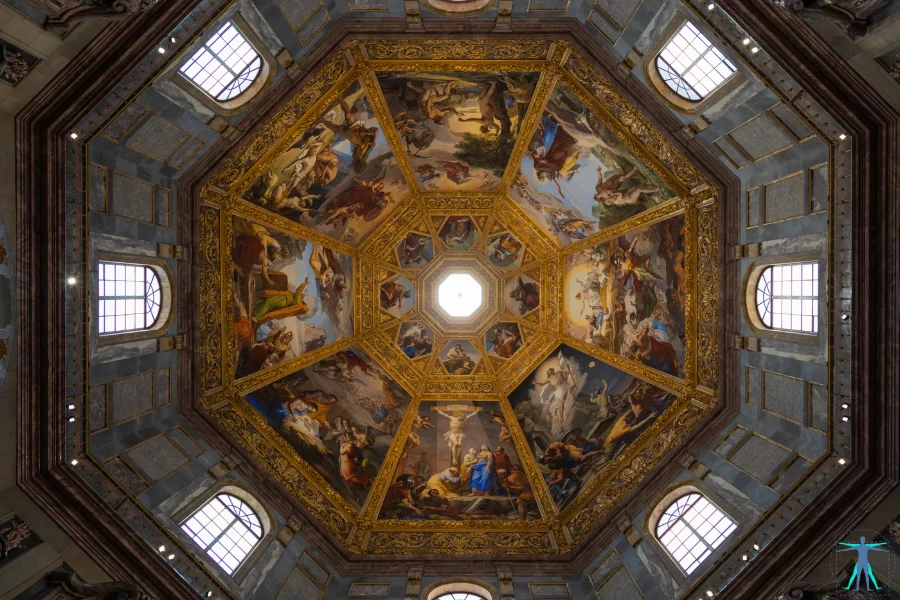
The Medici chapels, built in the 16th and 17th centuries, are central to understanding the Medici family’s impact on Florence’s art and architecture. These chapels form a vital extension to the Basilica of San Lorenzo, one of the city’s most historic churches.
Medici patronage of architecture and the arts reached its peak during the Renaissance. The construction of these chapels was closely linked to the family’s desire to create a lasting memorial for their dynasty.
This effort reflected their wealth and influence as one of the most powerful families in Renaissance Florence. Cosimo de’ Medici, as a Renaissance ruler, set the stage for his descendants to commission large-scale projects.
His legacy encouraged the Medici to support many artists and architects. These commissions included designing and decorating chapels that would serve as the main burial site for the family’s most prominent members.
Florentine history contains examples of political power and artistic heritage coming together. The Medici tombs inside the chapels highlight the family’s approach to funerary art and memorialization.
Each tomb design shows careful attention to artistic symbolism and reflects the family’s status in society. Grand structures like the Medici mausoleum were not only places of rest but also showcased the patron’s role as leaders in Italian Renaissance art.
Artists such as Michelangelo contributed sculptures that are still highly regarded today. These chapels testify to the Medici dynasty’s burial traditions and their ongoing significance in Florence.
10. Impact of the Renaissance Era on the Medici Burial Traditions
Cosimo de’ Medici’s legacy shaped the burial traditions of Florence during the Renaissance. The Medici family used their wealth and power to make their tombs into statements of both art and status.
Medici tombs, located in places like the Church of San Lorenzo, display impressive sculptures and rich materials. Renaissance Florence valued art and architecture as a means of showcasing a family’s social standing.
The Medici dynasty’s burial traditions switched from simple graves to carefully planned tombs with symbolic decoration and detailed design. These changes coincided with the rise of Italian Renaissance art, during which artists like Andrea del Verrocchio designed tombs using bronze and marble.
Medici patronage of architecture brought advancements in tomb design and the decoration of chapels and mausoleums. Burial sites such as the Medici chapel became stages for Florentine history and artistic heritage.
Leaders like Cosimo I de’ Medici continued this trend, using grand tombs and artistic commissions to reinforce the Medici’s role as a political dynasty. The Renaissance era encouraged the use of mathematical vocabulary in art, leading to precise and balanced proportions in tomb designs.
Tomb decoration from this period often featured classical themes and symbols linking the Medici family with ancient Rome. These artistic choices made the Medici mausoleum more than a burial place—they became lasting reminders of the family’s wealth and influence over Renaissance Florence.
The Medici burial site remains a testament to their patronage of the arts and their lasting mark on Florentine culture.
Frequently Asked Questions
Researchers have long been fascinated by Cosimo de’ Medici’s burial, his family’s legacy, and the rich history of their tombs in Florence. Stories about the Medici family’s wealth, artistic connections, and political influence continue to be the subject of ongoing study.
Where is Cosimo Medici’s tomb?
Cosimo de’ Medici is buried in the church of San Lorenzo in Florence. His tomb is located beneath the floor, marked by a simple stone slab.
The exact burial spot is located within the Medici Chapels, which are renowned for housing the remains of several family members.
Did Cosimo de’ Medici build the Duomo?
Cosimo de’ Medici did not build the Florence Cathedral (Duomo). The construction began before his time, in 1296, by Arnolfo di Cambio.
Cosimo and the Medici family were significant patrons of Florence, supporting numerous art and architectural projects throughout the city.
Did Michelangelo create a tomb for the Medici family?
Michelangelo designed and sculpted monuments for the Medici family at the Medici Chapels in San Lorenzo, Florence. These include the tombs of Lorenzo and Giuliano de’ Medici, which are famous for their artistic details.
He did not design Cosimo de’ Medici’s specific tomb.
What happened to Cosimo in Medici?
Cosimo de’ Medici ruled Florence and became one of the most powerful figures of the Italian Renaissance. Known as Cosimo the Elder, he survived political challenges and strengthened his family’s influence.
He died in 1464 and was honored as “Pater Patriae,” or “Father of the Nation.”
How much money did Cosimo de’ Medici have?
Cosimo de’ Medici was one of the wealthiest men of his time. He grew the Medici Bank into Europe’s most powerful financial institution.
Exact figures are lost, but his assets were so vast that they supported Florence’s government and significant buildings for decades.
Does the Medici house still exist?
The original Medici family house, the Palazzo Medici Riccardi, still stands in Florence. It is now a museum open to visitors.
It offers valuable insight into the family’s history and influence on the city.
Who inherited the Medicis’ wealth?
Most of Cosimo’s wealth passed to his son Piero, and later to his grandson Lorenzo the Magnificent. Over the generations, the Medici family continued to be major bankers, rulers, and patrons until their line ended mainly in the 18th century.
Did Cosimo Medici go into exile?
Political rivals sent Cosimo de’ Medici into exile in 1433. After a year, he returned and regained power, strengthening his family’s influence in Florence.
Where is the Medici family buried?
Many members of the Medici family, including Cosimo, are buried in the Medici Chapels at San Lorenzo in Florence. After tombs above ground were plundered, people moved their tombs below the chapel floor for protection.
Who is the head of the Medici family today?
The direct Medici line ended in the 18th century. No recognized head of the family exists today.
Some distant relatives may carry the Medici name. However, no one holds historical ties or authority related to the Medici legacy.
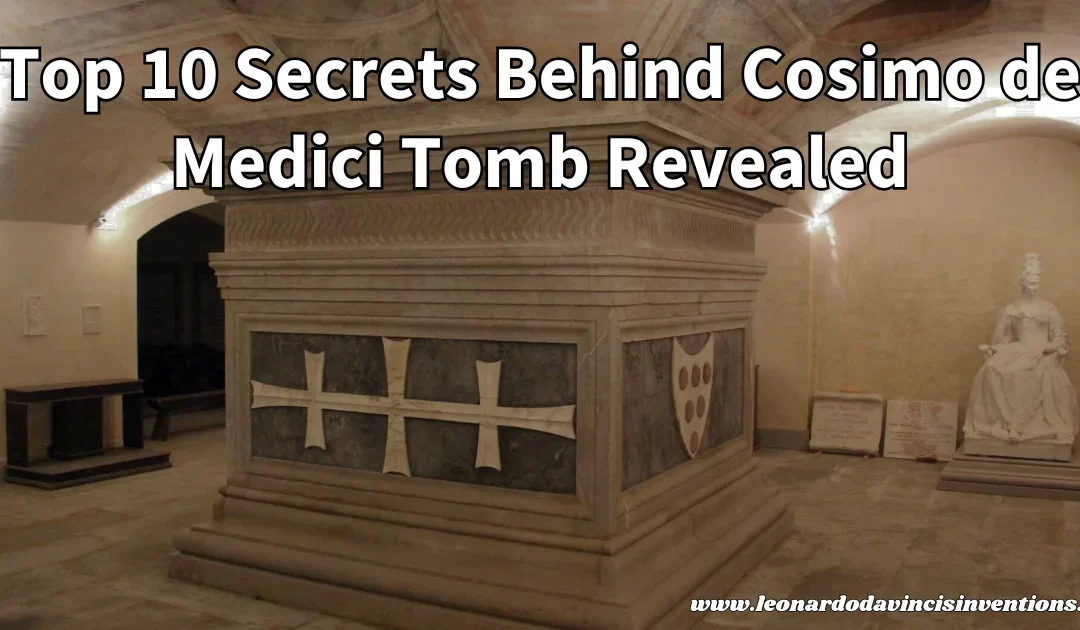
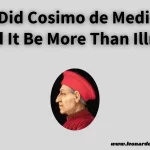
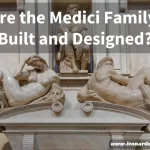

 Leonardo Bianchi,
the creator of Leonardo da Vinci's Inventions.
Thank you for visiting
Leonardo Bianchi,
the creator of Leonardo da Vinci's Inventions.
Thank you for visiting